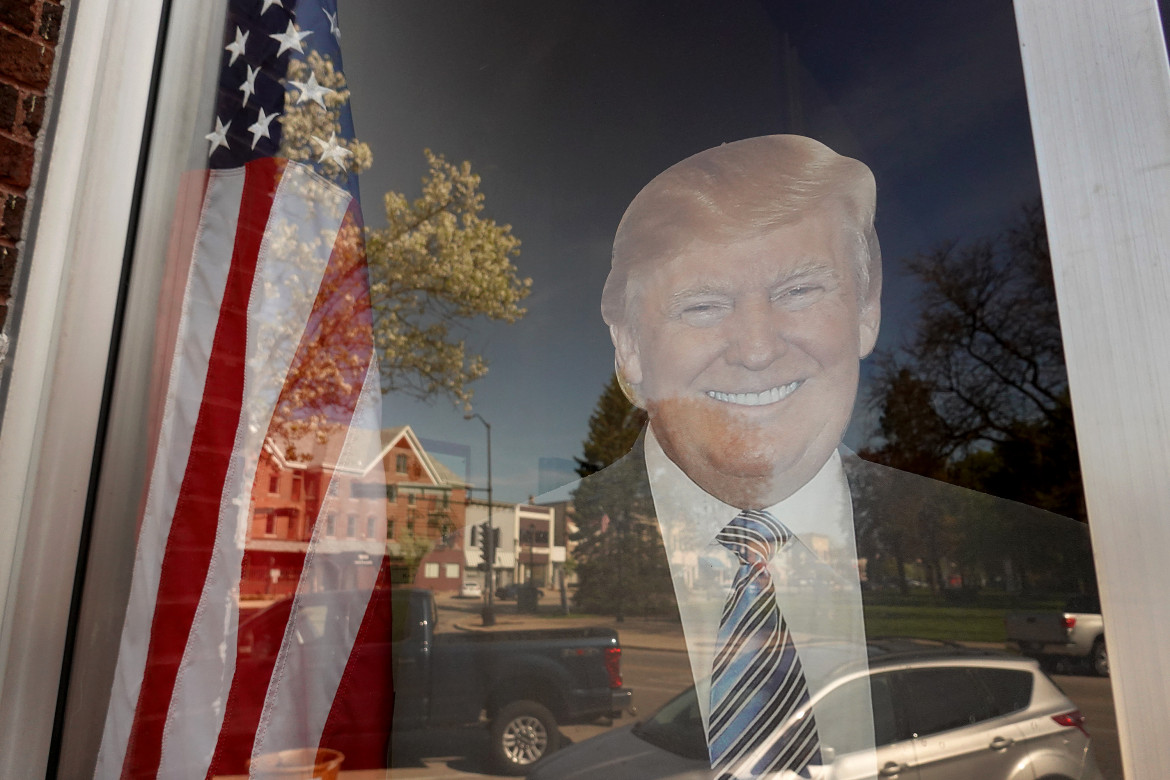Commentary
Trump’s conspiracy theories are less persuasive in a courtroom
After New York, a series of other indictments are on the way. But any uprising like January 6 is unlikely to happen again.

Trump’s troubles don’t end with Manhattan DA Alvin Bragg, with his 34 charges. There’s also Fani Willis, the Fulton County DA, who will soon make a decision on whether to charge him for his attempts to interfere in Georgia’s 2020 vote count. And there’s also Jack Smith, the federal special counsel in Washington investigating the January 6, 2021 attack on Capitol Hill and the unlawful keeping of classified documents at Mar-a-Lago. And there’s the trial in which E. Jean Carroll is accusing him of rape: April 25 will be the first hearing. Letitia James, the New York state attorney general investigating financial fraud crimes, also has a hearing scheduled for October 2.
According to Trump, it’s all a “vast conspiracy,” a plot hatched by black Democratic judges who are supposedly racist against whites (Bragg, Willis, James), a “lunatic” with a supposedly fake name (Jack Smith) and women looking for money and easy notoriety, all an operation supported by the liberal media and leftist commentators. In his narrative, he, the victim of the conspiracy, will once again turn the tide in his favor, as he has always managed to do during his fifty years of legal troubles since the 1970s, first as an unscrupulous tycoon, then also as a politician and president.
But now the protagonist himself is starting to doubt this story. Trump is in real trouble, the conspiracy theory is struggling to gain much support, even among his most fanatical followers, and he still has to deal with the harsh reality of painstaking investigations, conducted by a number of different by-the-book DAs, for a range of different crimes.
In the days when he was a property tycoon, his courtroom misadventures used to be handled by big law firms and were the stuff of tabloids; today, as a former president, he still has the respect reserved for his office, and he is cashing in on all of it. Even worse, as a presidential candidate, he can react to investigations not only with throngs of lawyers but by making the magistrates’ work harder by adding personal, even physical, political intimidation to the mix, with calls for mobilization and revolt addressed to his “Movement,” calling on them to “PROTEST, PROTEST, PROTEST!” to “SAVE AMERICA!” (a.k.a. him).
However, there hasn’t been a real mobilization. Nothing remotely like the January 6, 2021 uprising. That day, viewed from a distance, certainly has its own unrepeatable uniqueness. According to the New York Times, the January 6 uprising “drew its incendiary force from its particular combination of rank-and-file Trump supporters and a smaller cohort of extremists who had found a footing in the Republican mainstream in the Trump years.” These groups coalesced after 2020, as “Covid-19 lockdowns, racial justice protests and riots and finally Mr. Trump’s claims of a stolen election drew them together around a common set of grievances — grievances that were converted into a call to action by right-wing media and influencers, Republican politicians and Mr. Trump himself.”
According to political scientist Jon Lewis, interviewed in the same article, “the further away we get from Jan. 6, the more it is being recognized as a unique perfect storm of events, of actors, of circumstances,” a convergence of subversive impulses produced by different upheavals, which seems unlikely to be repeated nowadays. Moreover, the opportunistic and token solidarity of the Republicans is clearly about to melt away at any moment if the upcoming indictments, adding to those in the New York court, build up to such a level to make Trump’s political defense problematic. And that is what seems likely to happen soon.
Biden had only a half-smile in answer to a reporter’s question about his rival’s troubles with the justice system. The bulk of the Democrats are keeping silent as well. Whether or not this attitude is part of a thought-out plan will be seen shortly, but the fact remains that it highlights the difference between the two camps.
The Republican one is discombobulated by the destructive energy of its leader and current expected 2024 presidential candidate – pure chaos. The other side, as the New York Times writes, is the anti-chaos camp. The events of these days are writing the script that will decide how the next presidential race will play out. The seasoned and experienced politician on one side, the dangerous blowhard on the other – anti-chaos and chaos itself. It’s a clash that, on closer inspection, is not very different from the 2020 contest – with the notable difference being the reversal of roles. Joe Biden, formerly the challenger, is now the incumbent president; Trump, back then the incumbent president, is now the challenger. Both are all too familiar to voters. Both are very advanced in years. Both have been more grudgingly accepted than actively chosen by their respective parties. But Biden has a starting advantage, if only because he is the incumbent president, over Trump, beset as he is by mounting judicial findings that neither he nor his strategists seem to be able to turn into strengths in his favor.
Making people believe in the conspiracy is much the same as making them believe in the fake images of Trump being cuffed like a criminal. But now, those touting the conspiracy have been mostly reduced to just himself, and it no longer works.
Originally published at https://ilmanifesto.it/lincendiario-trump-resta-con-il-cerino-in-mano on 2023-04-06
